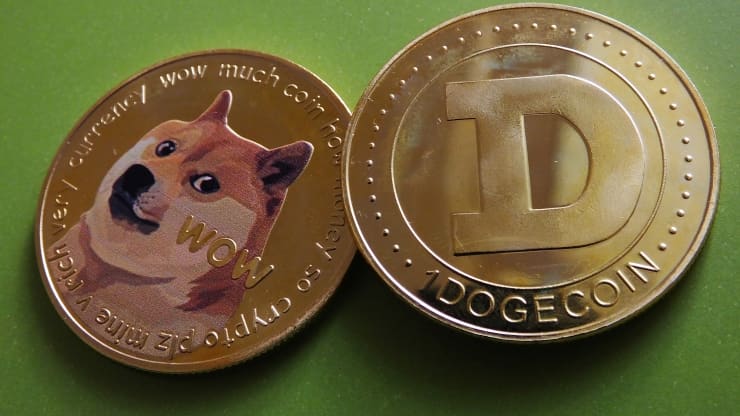- Heavily reliant on bankers and financial intermediaries, the global commercial system is a complex arena where access is limited to a few.
- The advent of blockchain technology promises to revolutionize a market that is ripe for disruption.
- One key development in this area is the phenomenon of STOs or Security Token Offerings
What is STO?
A security token offering or STO is a process that relates to the tokenization of securities. It is currently ushering efficiencies in the form of higher ease of access and making the process more affordable. We’ve previously talked about IEOs, but this is a different route entirely and suits a separate group of companies. It is a type of offering whereby companies can raise funds from the public.
While traditionally, this has involved the issue of IPOs, STOs perform the same function with reduced cost and complexity. The transactions are recorded using blockchain technology making it verifiable and transparent, while the virtual nature of the transactions minimizes the role of investment bankers resulting in significant cost savings.
STOs are linked to an underlying asset such as shares and debentures which can be traded publicly in the market. They can also be extended to represent real assets such as paintings, property, or other goods, which can then be monetized.
STOs vs ICOs
The popularization of STOs can be traced to the failure of many ICOs in the 2017-2018 period due to fraud and scams. Largely unregulated, the ICO market witnessed a boom followed by a crash all within the span of just a few months.
Since STOs were meant to resolve the problem of ICOs, they were subject to regulation by agencies such as the Securities and Exchange Commission (SEC). This proved to be both a boon and a bane for STOs which were regarded as safer than ICOs, but disliked for the accompanying red-tape.
STOs vs IPOs
STOs address three key issues of IPOs that tend to concern commercial entities—expense, accessibility, and ease of convenience. While factors such as accessibility and immutability minimize the role of intermediaries such as investment bankers and legal firms in the fundraising process, leading to considerable cost reductions, they also offer ease of convenience when it comes to post-offering administrative procedures for newly public commercial entities.
The cost of conducting an IPO stands at USD 4 million as per rough estimates. By contrast, the cost of launching an STO is about USD 100,000.
Another area where STOs score over IPOs is jurisdiction. While IPOs are available to people only from pre-defined jurisdiction, STOs can be accessed by people all around the world irrespective of their domicile. There are, however, national laws governing STOs (or banning them in some cases) which they are subject to.
STO Regulations
Despite the many advantages of STOs, not all countries are open to it. Some of the key nations that have banned STOs include China and South Korea, while UAE, Russia and India have left it unregulated.
Nations/territories such as the EU, US, UK, Canada, Brazil, Australia, Israel, Singapore and Japan have drafted laws for the regulation of STOs and allow them to operate within those restrictions. Nations are generally more accepting of STOs compared to ICOs as they find them easier to regulate.
Launching An STO
Link: https://pixabay.com/photos/office-business-colleagues-meeting-1209640/
Launching an STO is a challenging process that requires the coordination of various entities such as the management, marketers, developers and advisors. Here is a brief outline to commencing an STO with respect to the US market.
1. Preparation: This involves a number of steps such as finalizing the names of advisors, selecting the token type to be offered, deciding on a budget for the launch, developing a marketing plan, company registration, and compilation of the offer.
2. Registration with SEC: US law mandates all issuers of securities to register with the SEC. The registration process requires the submission of a prospectus containing key information about the issuer and the company’s financial statements, as well as certain additional data. Small public companies with annual revenues of less than USD 50 million are allowed to furnish information as per simplified rules.
3. Selecting a platform: It is essential to select an issuance platform to help with aspects like legal compliance, KYC/AML verification, token setup etc. These enable investors to log in, access all information related to the STO, and make the purchase. Some of the best platforms in this regard are Polymath, Securrency and Securitize.
4. Promotion: The marketers swing into action by helping spread the word. The company approaches the public with documents like the white paper, yellow paper, and road map laying down the goal, execution strategy, and benefits for the investors.
5. Private sale and pre-sale: The company conducts private sale and pre-sales to selected individuals that have shown interest in the project. Sometimes the tokens are offered at a discounted price. The management may use the funds from such sales for driving promotions or any other activity they deem fit.
6. Main sale: The remaining tokens are sold at this stage. Once this stage is completed the tokens are free to be traded in exchanges subject to conditions such as a lock-in period.
The Future of STOs
With their many advantages, STOs could transform the future of fundraising resulting in a more efficient, dynamic market. Security token news tracker STOcheck.com listed 88 STO projects as of beginning March 2020 raising funds in excess of USD 250 million. With the market still in a nascent stage, there is a great scope for growth. But it also means there is lack of experience in handling STOs which may end up delaying its progress.











